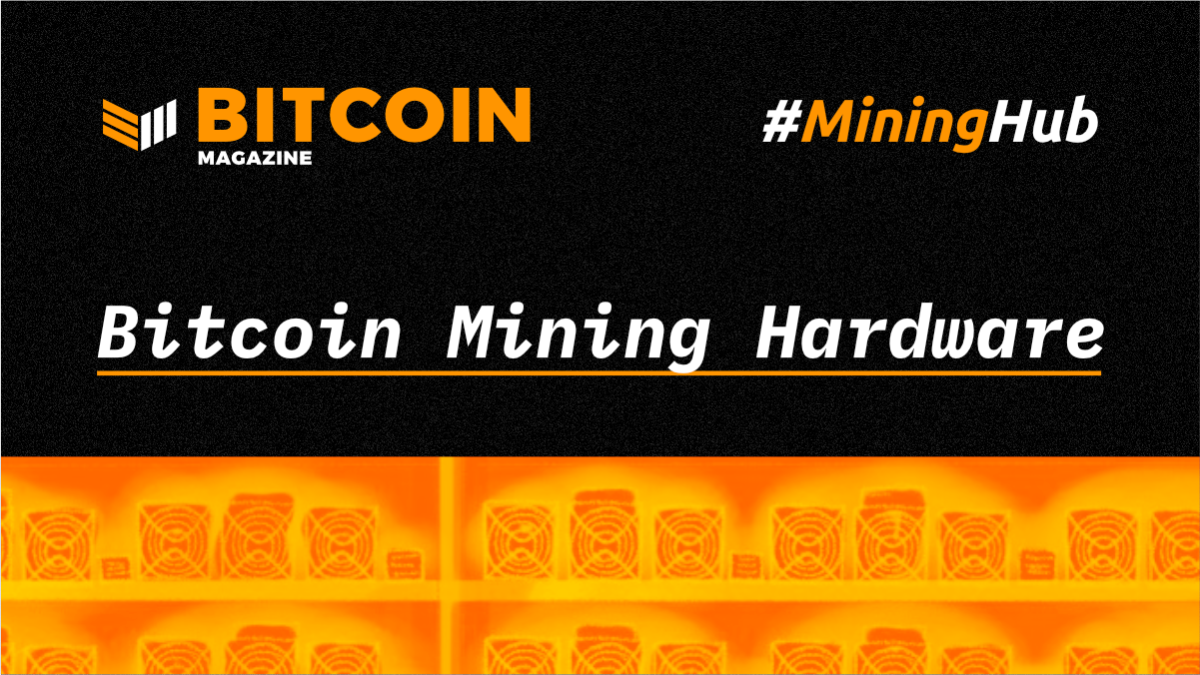
Bitcoin mining hardware, also known as mining rigs, are computing devices made specifically to “guess” the correct bitcoin block hash as quickly and with as little power as possible. While the earliest Bitcoin mining was conducted by standard computer CPUs, mining operators were incentivized to achieve more hash power and did so partly through the creation of customized machines, first with graphics processing units (GPUs) and, later, with ASICs. The launch of Bitcoin ASICs in 2013 spurred professionalization of the mining industry, placing most of the computational power in specialized data centers, and the most effective mining rigs today all leverage ASICs.
How Does Bitcoin Mining Hardware Work?
Mining hardware, or “rigs,” has several components that must be combined to create maximum efficiency. The ASIC design is most often thought of as the key variable, but hardware shell design and cooling mechanisms like fans affect how efficiently rigs can turn electricity into hash power, as well as the rigs’ reliability.
Mining rigs are powered by electricity, one of the major costs in mining, so the efficiency of using that electricity has a major impact on mining profitability, as does the ability to run these rigs continuously or with minimum interruption. An example of something that could cause a mining rig to fail is overheating, so mining hardware is thus also designed to (among other things) limit the likelihood of overheating. Major operations that run large quantities of mining rigs will make special accommodations to keep their hardware cool and running without interruption.
As bitcoin mining has grown from a hobby conducted by a few enthusiasts in their homes into a worldwide industry led by industrialized mining farms, ASIC manufacturing has become an industry in its own right, with models continuously updated and iterated upon and hardware design tested fastidiously.
Mining hardware manufacturers must rely on foundries for the production, with Taiwan Semiconductor Manufacturing Company (TSMC) and Samsung being the only foundries today working on cutting-edge semiconductor nodes that have taken on bitcoin mining manufacturers as clients. These foundries have limited capacities, so the relationship between mining hardware manufacturers and foundries is crucial to their success.
In brief, the ASIC manufacturing process looks like this:
1. Receive wafers (thin slices of semiconductor) from a foundry
2. Test the wafers for fabrication errors using prediction models
3. Test and package the wafers within an integrated circuit (IC) design
4. Ship the ICs to printed circuit board (PCB) manufacturers for mounting
5. Integrate the completed boards with other electronic components to create the final product
What’s the Best Mining Hardware?
Numerous companies manufacture bitcoin mining hardware, with hundreds of millions of dollars invested into production, research and development each year. Bitcoin mining hardware manufacturers like MicroBT, Canaan, Ebang, Bitfury, Innosilicon and Bitmain compete to offer the best mining rigs on the market. There are millions of individual ASICs running at any given time, though these are turned on and off based on the difficulty, competition and, ultimately, the profitability of bitcoin mining at any moment.
Ultimately, the best bitcoin mining hardware is the device that can guess hashes the fastest with the least energy consumption and most up time. The ideal setup for a mining operation must also take into account hardware costs, climate, shipping time and customs charges — so operators have many factors to consider.
Manufacturers and third parties sell bundles, such as shipping containers set up with a number of miners, liquid cooling setups and more, to factor for some of these additional variables. To focus specifically on the specs of the individual mining rigs being manufactured today, the chart below lays out the primary manufacturers and products involved. Pricing for mining rigs directly from the manufacturers and on the secondary market can be variable based on the price of bitcoin at the time, but the core functionality variables should remain constant, including a rig’s hashrate (TH/s) and power usage (W).









